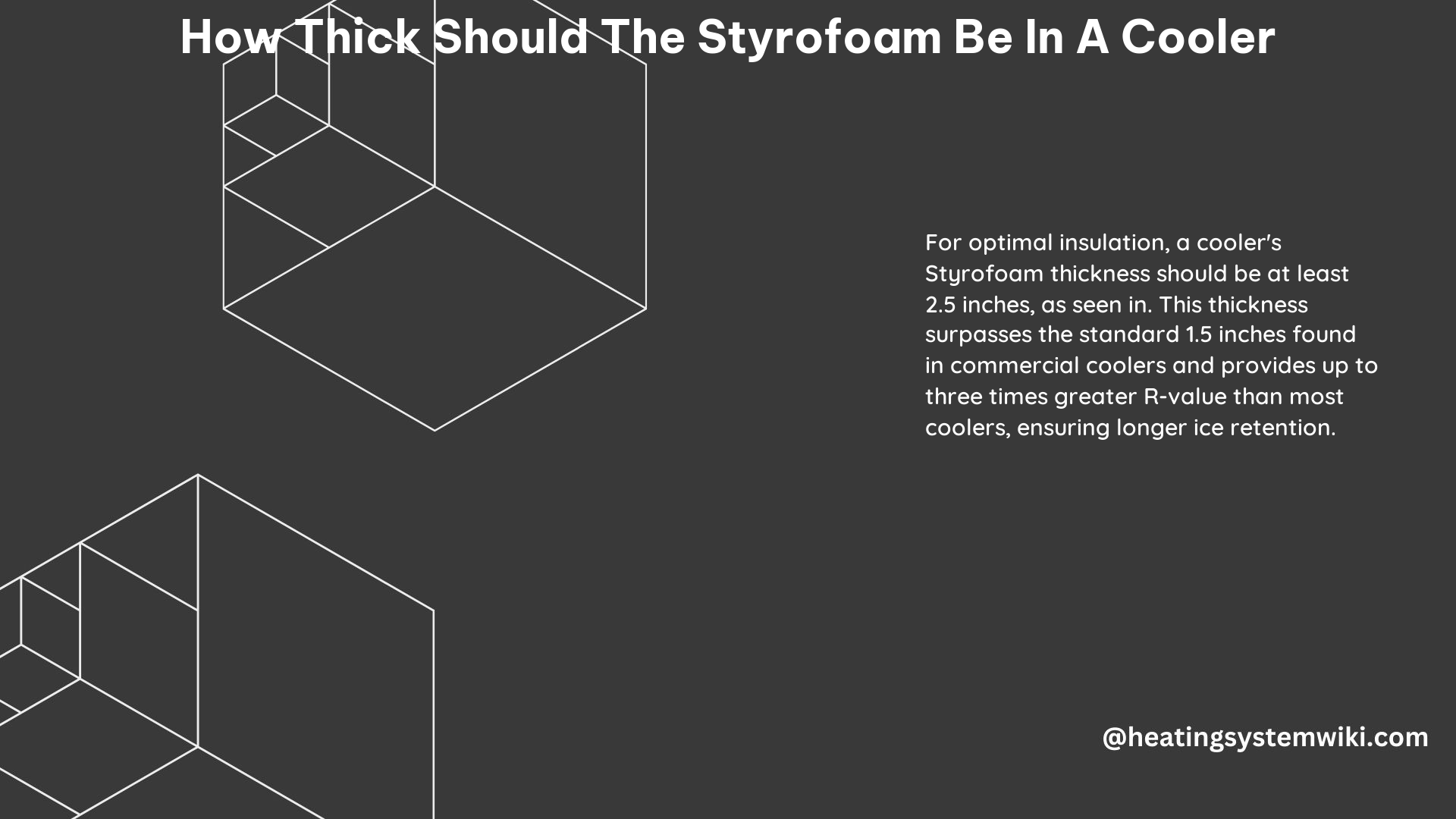When it comes to building a reliable and efficient cooler, the thickness of the styrofoam used is a crucial factor to consider. The thickness of the styrofoam directly impacts the insulation properties of the cooler, which in turn affects its ability to maintain the desired temperature for extended periods. In this comprehensive guide, we’ll delve into the optimal styrofoam thickness for coolers, considering various factors such as intended use, insulation requirements, and cost-effectiveness.
Factors Influencing Styrofoam Thickness
Intended Use of the Cooler
The intended use of the cooler plays a significant role in determining the appropriate styrofoam thickness. Coolers used for different applications, such as sailing, camping, or beekeeping, may have varying insulation requirements.
For instance, coolers used in sailing applications often require more robust insulation to withstand the harsh marine environment and maintain the temperature of perishable items for extended periods. These coolers typically feature 2-inch thick, rigid, construction foam, which provides an R-value that is 2 to 3 times greater than most standard coolers.
On the other hand, coolers used for less demanding applications, such as transporting beverages or snacks for a day trip, may only require a 1.5-inch styrofoam thickness to maintain the desired temperature for a shorter duration.
Desired Insulation Level
The desired insulation level is another crucial factor in determining the optimal styrofoam thickness. Coolers with higher insulation requirements, such as those used for long-term food storage or in extreme weather conditions, will benefit from a thicker styrofoam layer.
According to the sources, the typical styrofoam thickness for coolers ranges from 1.5 inches to 2.5 inches. The Grand Styrofoam Cooler from MrBoxOnline, for example, has a wall thickness of 1.5 inches, while the disposable white foam coolers used in building projects are about 2.5 inches thick.
For optimal insulation and temperature maintenance, a styrofoam thickness of 2 inches or more is recommended. This thickness provides a good balance between insulation, cost, and weight, making it suitable for most cooler applications.
Cost and Weight Considerations
In addition to insulation requirements, the cost and weight of the cooler are also important factors to consider when determining the optimal styrofoam thickness.
Thicker styrofoam generally results in a higher material cost, as more raw material is required. However, the increased insulation provided by the thicker foam can offset the higher initial cost by improving the cooler’s energy efficiency and reducing the need for frequent ice replenishment.
The weight of the cooler is another consideration, as thicker styrofoam can add significant weight, making the cooler less portable and more challenging to transport. This is particularly important for applications where the cooler needs to be frequently moved, such as camping or sailing.
Styrofoam Cooler Construction

When building a styrofoam cooler, there are several techniques and materials to consider to ensure a durable and well-insulated final product.
Cutting the Styrofoam
To cut the styrofoam to the desired shape and size, you can use a utility knife or a table saw. It’s important to measure the dimensions carefully and make clean, precise cuts to ensure a tight fit and minimize gaps that could compromise the insulation.
Adhesive Selection
Gluing the styrofoam pieces together is crucial to maintaining the cooler’s structural integrity and insulation properties. A strong adhesive, such as 3M spray adhesive, is recommended to create a tight seal and prevent air leaks.
Lid Design
The design of the cooler’s lid can also impact the overall insulation performance. A plug-style lid, where the lid fits snugly into the cooler’s opening, can provide a superior fit and better insulation compared to a simple flat lid.
Technical Specifications
To summarize the key technical specifications for styrofoam coolers:
| Specification | Range |
|---|---|
| Styrofoam Cooler Wall Thickness | 1.5 to 2.5 inches |
| R-value | 2 to 3 times greater than most coolers for 2-inch thick, rigid, construction foam |
| Material | Expanded polystyrene (EPS) or extruded polystyrene (XPS) foam |
| Adhesive | 3M spray adhesive or similar |
Conclusion
In conclusion, the optimal thickness of the styrofoam in a cooler depends on the intended use, desired insulation level, and cost-effectiveness considerations. For most applications, a styrofoam thickness of 2 inches or more is recommended to provide superior insulation and temperature maintenance. By understanding the factors that influence styrofoam thickness and following best practices for cooler construction, you can build a highly efficient and reliable cooler that meets your specific needs.
References
- Woodworking Talk. (2011). Wooden Ice Chest-what is suitable thickness of styrofoam to use. Retrieved from https://www.woodworkingtalk.com/threads/wooden-ice-chest-what-is-suitable-thickness-of-styrofoam-to-use.24375/
- Sailboat Owners Forums. (2016). Coolers, ice chests, etc. Retrieved from https://forums.sailboatowners.com/threads/coolers-ice-chests-etc.150184/
- Permies. (2022). Building with disposable white foam coolers? Retrieved from https://permies.com/t/205775/Building-disposable-white-foam-coolers
- MrBoxOnline. (n.d.). Grand Styrofoam Cooler. Retrieved from https://www.mrboxonline.com/205x1325x12-quart-grand-styrofoam-coolers-p-4115.html
- MrBoxOnline. (n.d.). 8x6x7 Lil’ Foam Cooler. Retrieved from https://www.mrboxonline.com/8x6x7-quarts-lil-styrofoam-coolers-p-6787.html
